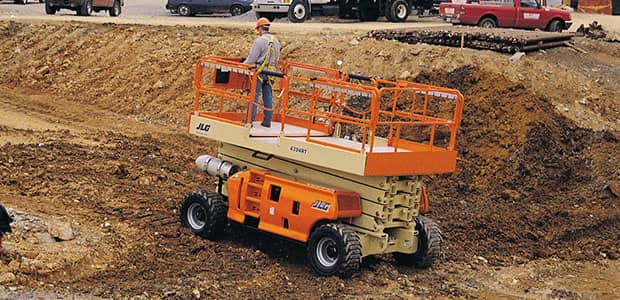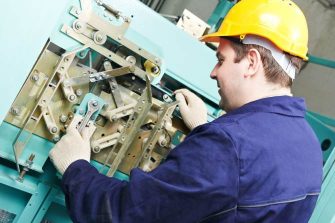Professional Lift Engineer Course: Educating for Top Lift Repair Companies Near Me
Professional Lift Engineer Course: Educating for Top Lift Repair Companies Near Me
Blog Article
Comprehensive Overview to Elevator Equipments and Their Maintenance
Navigating the intricate globe of elevator systems and their maintenance is a job that demands accuracy and understanding. From the various kinds of elevator systems in usage to the careful adherence to safety regulations, the maintenance of these vertical transport gadgets is a complex venture. As buildings skyrocket higher and innovation advancements, the demand for an extensive understanding of lift systems becomes increasingly essential. Join us as we unravel the intricacies of elevator maintenance, checking out usual issues, best techniques, and innovative technologies that form the modern-day landscape of upright transport.
Kinds of Lift Systems
The most common types include hydraulic elevators, grip lifts, machine-room-less lifts, and vacuum elevators. Hydraulic elevators are perfect for low-rise buildings and use a hydraulic piston to move the lift auto. Machine-room-less lifts are a space-saving alternative as they do not need a different equipment space for the elevator equipment.
Each sort of lift system has its own advantages and disadvantages, making it crucial for structure owners and developers to carefully consider their specific demands prior to choosing the most ideal choice. Elements such as building height, room schedule, energy efficiency, and spending plan restrictions all play a considerable role in establishing the most effective elevator system for a specific building.
Common Upkeep Issues
Normal maintenance of elevator systems is vital to make certain smooth operation and lengthen their lifespan. Regardless of regular upkeep, lift systems can still experience usual maintenance problems that require to be promptly dealt with to avoid interruptions in solution. One of the most regular concerns is door malfunctions. Elevator doors might obtain misaligned, leading to concerns with opening and closing appropriately. This can cause delays and safety and security hazards, needing instant focus from maintenance service technicians. Another usual issue is associated with the elevator's leveling accuracy. Passengers may experience tripping dangers and pain if the lift does not straighten appropriately with the floors. Additionally, problems with the control system, such as sensing unit issues or electrical concerns, can create the lift to malfunction or stop functioning completely. Normal inspections and positive maintenance can assist determine and settle these usual upkeep concerns prior to they intensify and affect the general performance of the elevator system.
Safety Rules and Conformity
Following stringent safety and security guidelines and guaranteeing compliance with industry criteria are vital for preserving the functional stability of elevator systems. Lifts go through a comprehensive collection of security guidelines to secure travelers, maintenance employees, and the basic public. Regulatory bodies such as the Occupational Safety And Security and Health Management (OSHA) in the United States and the European Lift Organization (ELA) in Europe establish standards that cover various facets of elevator layout, procedure, installment, and maintenance.
Conformity with these laws is not just a lawful need yet also an ethical lift maintenance company responsibility for structure proprietors and elevator maintenance companies. Regular evaluations, upkeep checks, and adherence to safety procedures laid out in the regulations are crucial to make certain the risk-free and effective procedure of lift systems.
Ideal Practices for Maintenance

Another essential best practice is to quickly address any uncommon sounds or documented problems to avoid additional damage. Carrying out a positive strategy to maintenance can conserve money and time in the future by staying clear of expensive repairs or substitutes. Building owners need to likewise consider investing in modernization upgrades to boost the effectiveness and security of their elevator systems. By adhering to these best practices, lift systems can operate smoothly and securely, providing trusted upright transportation for residents.

Advanced Technologies for Performance
Carrying out innovative innovations in elevator systems can considerably enhance functional performance and traveler experience. lift maintenance services. One of the key developments in lift innovation is the introduction of destination control systems. These systems allow travelers to input their preferred floor prior to going into the elevator, which then routes them to one of the most efficient automobile. By enhancing and reducing unnecessary quits travel paths, location control systems decrease wait times and congestion in high-traffic structures.
Furthermore, the integration of smart sensors and anticipating maintenance capacities has actually transformed lift maintenance. These sensing units can spot possible problems prior to they rise, enabling aggressive maintenance interventions and decreasing downtime. Furthermore, the usage of energy-efficient components and regenerative drives helps in reducing power intake and operating expense in lift systems.
Additionally, the execution of cloud-based monitoring and remote diagnostics permits real-time monitoring of lift performance and instant troubleshooting of any kind of malfunctions. This positive approach not only enhances system reliability yet additionally enhances the overall customer experience by making certain smooth and nonstop lift operations.
Final Thought
In final thought, recognizing the different kinds of lift systems, usual upkeep concerns, safety policies, finest upkeep methods, and advanced modern technologies for efficiency is important for making certain the smooth operation of elevators. By adhering to security policies and carrying out finest methods for maintenance, structure owners can lengthen the life expectancy of their elevator systems and guarantee the security of passengers. It is very important to stay upgraded on the most up to date improvements in lift technology to enhance effectiveness and integrity.
The most common kinds include hydraulic elevators, traction lifts, machine-room-less elevators, and vacuum cleaner lifts. Hydraulic lifts are ideal for low-rise structures find out this here and make use of a hydraulic piston to relocate the elevator automobile. Machine-room-less elevators are a space-saving option as they do not require a different device room for the lift machinery. Normal inspections and aggressive maintenance can assist identify and deal with these common maintenance concerns before they escalate and influence the general performance of the lift system.

Report this page